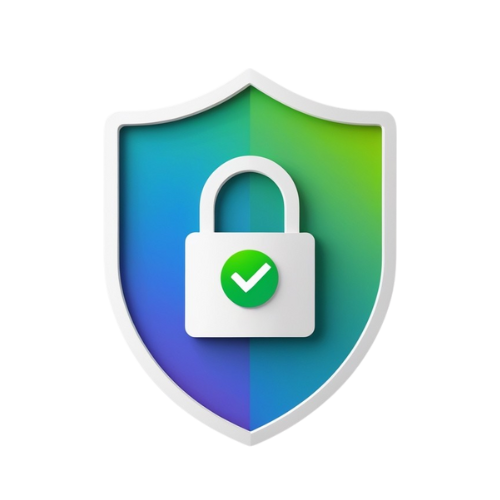Parental Controls
Parental controls are tools that allow you to monitor and limit what your children can access online. When used appropriately, they can help create a safer digital environment for your family.
Device-Level Controls
Most modern devices come with built-in parental control features:
- iOS/iPhone: Screen Time allows content restrictions, app limits, and downtime scheduling
- Android: Family Link app provides similar controls for Android devices
- Windows: Microsoft Family Safety offers activity reporting and content filtering
- Mac: Screen Time controls work across Apple devices
- Gaming consoles: Xbox, PlayStation, and Nintendo all offer family settings
App and Service Restrictions
Many popular apps and services offer specific controls for younger users:
- YouTube: YouTube Kids app and Restricted Mode
- Netflix: Profile-specific content restrictions
- Google: SafeSearch filtering for search results
- Social media: Age restrictions and privacy settings
- Music services: Explicit content filters
Parental Control Tip
Parental controls work best when combined with open conversations about online safety. Explain to your children why certain restrictions are in place and adjust them as your children mature and demonstrate responsible behavior.
Age-Appropriate Content Guidelines
Understanding content rating systems and age recommendations helps parents make informed decisions about what media and platforms are appropriate for their children.
Content Rating Systems Explained
Different types of media use different rating systems:
- Movies: G, PG, PG-13, R, NC-17 (US) or U, PG, 12A, 15, 18 (UK)
- TV Shows: TV-Y, TV-Y7, TV-G, TV-PG, TV-14, TV-MA
- Video Games: EC (Early Childhood), E (Everyone), E10+ (Everyone 10+), T (Teen), M (Mature), AO (Adults Only)
- Apps: 4+, 9+, 12+, 17+ (App Store) or PEGI ratings (Google Play)
- Websites: Often unrated, requiring parental judgment
| Age Group | Recommended Content Types | Special Considerations |
|---|---|---|
| 2-4 years | Educational content, simple games, age-appropriate videos | Limited screen time, parent co-viewing recommended |
| 5-7 years | Educational games, kid-friendly videos, basic creative apps | Supervised internet use, content filters essential |
| 8-10 years | Educational websites, moderated games, kid-friendly social platforms | Begin discussions about online safety, supervised social interactions |
| 11-13 years | Age-appropriate social media, educational content, monitored gaming | Privacy discussions, digital citizenship education |
| 14-17 years | Broader content access with monitoring, age-appropriate social media | Ongoing conversations about responsible use, gradual independence |
Screen Time Management
Finding the right balance of screen time is essential for children's well-being. Too much screen time can affect sleep, physical activity, and social development.
Healthy Digital Habits
Establishing healthy screen time habits early helps children develop a balanced relationship with technology:
- Set clear time limits based on age and maturity
- Prioritize educational and creative content over passive consumption
- Encourage regular breaks (e.g., 10 minutes every hour)
- Balance screen time with physical activity, reading, and social interaction
- Model healthy digital habits yourself
Screen-Free Zones and Times
Designating certain areas and times as screen-free helps maintain balance:
- Keep bedrooms screen-free, especially at night
- Establish device-free mealtimes for family connection
- Set a "digital sunset" time when devices are turned off before bed
- Create screen-free days or weekends occasionally
- Designate specific areas in the home for device use
Screen Time Tip
Focus on the quality of screen time, not just quantity. One hour of creative or educational content is more valuable than three hours of passive video watching.
Online Communication Safety for Kids
As children begin to communicate online through games, social media, and messaging apps, they need guidance on safe and responsible communication practices.
Safe Messaging Practices
- Only connect with people you know in real life
- Never share personal information (address, school name, etc.)
- Think before sending photos or videos
- Be careful with location sharing features
- Remember that messages can be forwarded or screenshotted
Stranger Danger Online
Children need to understand that people online may not be who they claim to be:
- Never agree to meet someone you've only met online
- Be wary of people who ask lots of personal questions
- Be suspicious of people offering gifts or special opportunities
- Tell a trusted adult about uncomfortable conversations
- Know how to block and report suspicious users
Cyberbullying Prevention and Response
Cyberbullying can happen on any platform where people can communicate:
- Treat others with respect online, just as in person
- Don't participate in negative comments or sharing hurtful content
- Save evidence of bullying (screenshots, messages)
- Report bullying to the platform and trusted adults
- Support friends who may be experiencing cyberbullying
Online Safety Conversation Starters
Regular conversations about online safety help build trust and keep communication open. Here are some age-appropriate conversation starters to use with your children:
For Ages 5-8
- "What are your favorite things to do online?"
- "If you see something scary or confusing online, what would you do?"
- "Let's talk about what kinds of information are OK to share online and what should stay private."
- "Who are the people you talk to when you play games online?"
For Ages 9-12
- "What would you do if someone you don't know tries to talk to you online?"
- "Have you ever seen something online that made you uncomfortable? What did you do?"
- "What do you think is a healthy amount of time to spend on devices?"
- "What do you think makes someone a good digital citizen?"
For Teens
- "How do you decide what to share on social media?"
- "What would you do if you saw a friend being bullied online?"
- "How do you verify if information you find online is true?"
- "What digital skills do you think will be important for your future?"
- "How do you balance your online and offline life?"
Conversation Tip
Approach these conversations with curiosity rather than judgment. Listen to your child's perspective and experiences before offering guidance. Regular, casual check-ins are more effective than infrequent, serious "talks."
